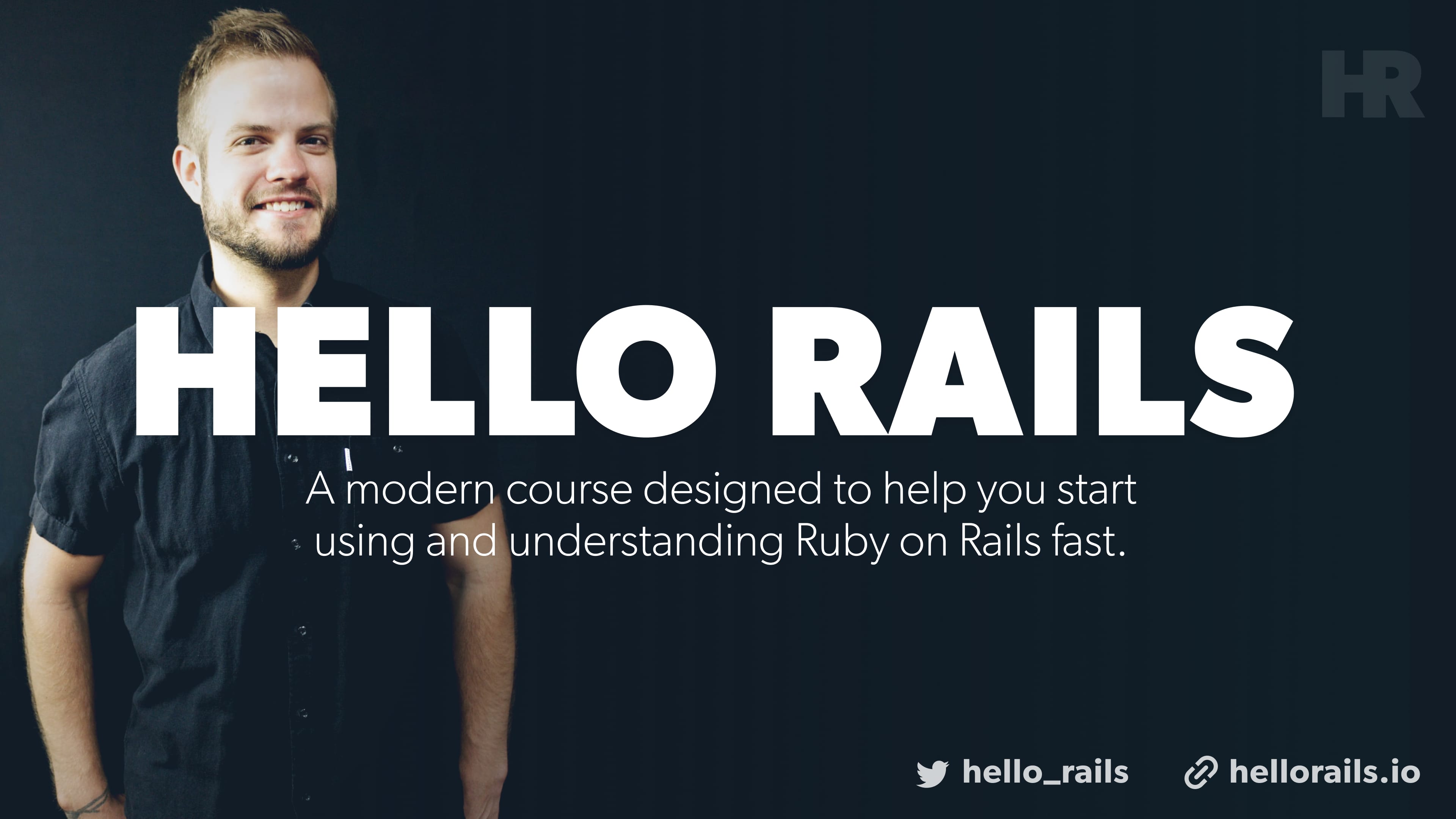
December 18, 2018
•Last updated November 5, 2023
Understanding the Ruby on Rails CLI
Ruby on Rails is such a vast framework. The Ruby on Rails CLI makes working with the framework that much easier. This video/article is the result of my own trials and tribulations while learning the framework.
Understanding the Rails CLI is beyond helpful when first creating a new application. Once you have Rails itself installed, you can open up a new terminal window and type rails. There, a large list of options will appear to help guide you with setting up your app for the first time. The available options are virtually endless which makes configuring your app a walk in the park.
In my video example I created a new ruby on rails application by running:
$ rails new demo_api --skip-coffee -T --webpack=vue --api
This scaffolds a new app whilst doing the following changes:
--skip-coffee- skips usingCoffeeScriptand opts for regularjavascriptinstead.-T- skips adding any new tests when a model or resource is generated.--webpack=vue- This tells rails to utilize webpack (which is now built-in if you want it) and also installs/configures theVue.jsfront-end javascript framework--api- Configures the new application to be API only so every controller rendersjsonand there are no views besides mailers.
While this list is a great start, there are even more options you could pass to enhance or "enhance" your app depending on what it is you are looking to build.
Within a new application
Having created your new app you can again run rails alone within your root app directory. This presents another long list of commands available. My demo app created in the video has the following. There's a lot of creating commands here that make our lives as ruby on rails developers that much easier. I invite you to get to know them more so your workflow can be faster.
The most common rails commands are:
generate Generate new code (short-cut alias: "g")
console Start the Rails console (short-cut alias: "c")
server Start the Rails server (short-cut alias: "s")
test Run tests except system tests (short-cut alias: "t")
test:system Run system tests
dbconsole Start a console for the database specified in config/database.yml
(short-cut alias: "db")
new Create a new Rails application. "rails new my_app" creates a
new application called MyApp in "./my_app"
All commands can be run with -h (or --help) for more information.
In addition to those commands, there are:
Rails:
console
credentials:edit
credentials:show
dbconsole
destroy
encrypted:edit
encrypted:show
generate
new
runner
secrets:edit
secrets:setup
secrets:show
server
test
version
Rake:
about
active_storage:install
app:template
app:update
db:create
db:drop
db:environment:set
db:fixtures:load
db:migrate
db:migrate:status
db:rollback
db:schema:cache:clear
db:schema:cache:dump
db:schema:dump
db:schema:load
db:seed
db:setup
db:structure:dump
db:structure:load
db:version
dev:cache
initializers
log:clear
middleware
notes
notes:custom
restart
routes
secret
stats
time:zones[country_or_offset]
tmp:clear
tmp:create
webpacker
webpacker:binstubs
webpacker:check_binstubs
webpacker:check_node
webpacker:check_yarn
webpacker:clobber
webpacker:compile
webpacker:info
webpacker:install
webpacker:install:angular
webpacker:install:coffee
webpacker:install:elm
webpacker:install:erb
webpacker:install:react
webpacker:install:stimulus
webpacker:install:typescript
webpacker:install:vue
webpacker:verify_install
webpacker:yarn_install
yarn:install
Closing thoughts
The CLI built into Ruby on Rails was all too daunting to me when I first started. Over time, and after building a few apps, I have grown to love what it offers. Quickly configuring things, generating things, deleting things, and more are all too possible using the command-line tool. If you are a newcomer to Ruby on Rails you should fiddle with the CLI a bit on a test project to see what you can come up with. Break things and rebuilt them again. This is the best way to learn.
Related videos
Shameless plug time
I have a new course called Hello Rails. Hello Rails is modern course designed to help you start using and understanding Ruby on Rails fast. If you're a novice when it comes to Ruby or Ruby on Rails I invite you to check out the site. The course will be much like these builds but a super more in-depth version with more realistic goals and deliverables. View the course!
Follow @hello_rails and myself @justalever on Twitter.
Categories
Collection
Part of the Ruby on Rails collection
Products and courses
-
Hello Hotwire
A course on Hotwire + Ruby on Rails.
-
Hello Rails
A course for newcomers to Ruby on Rails.
-
Rails UI
UI templates and components for Rails.

